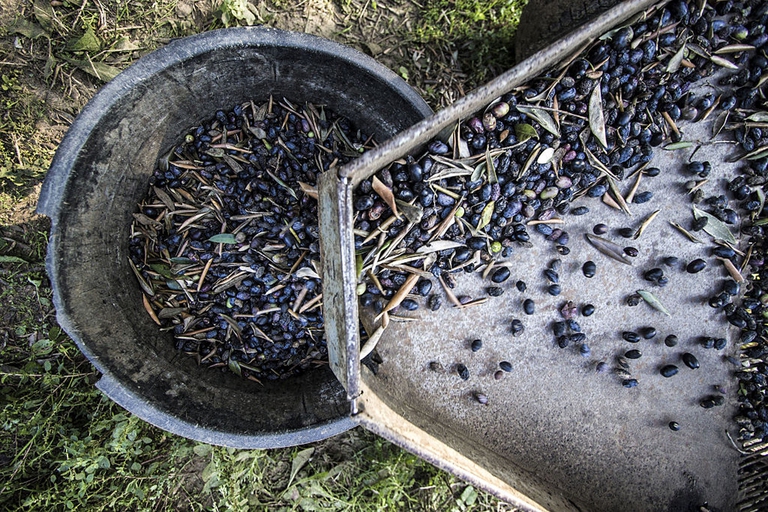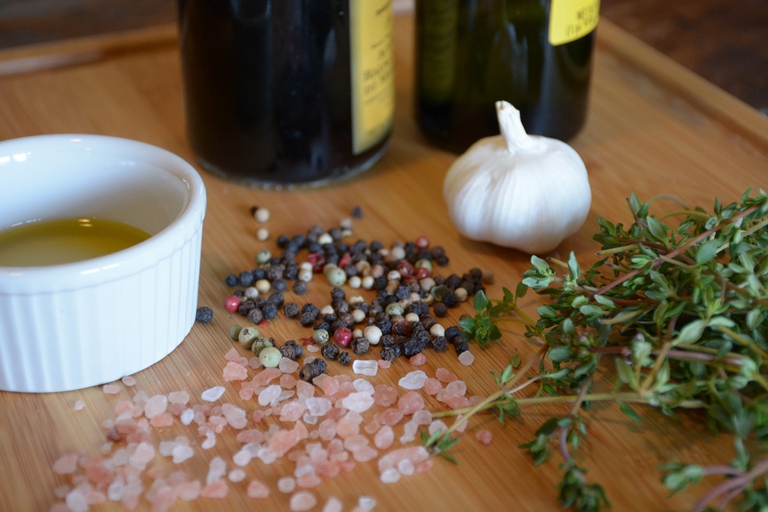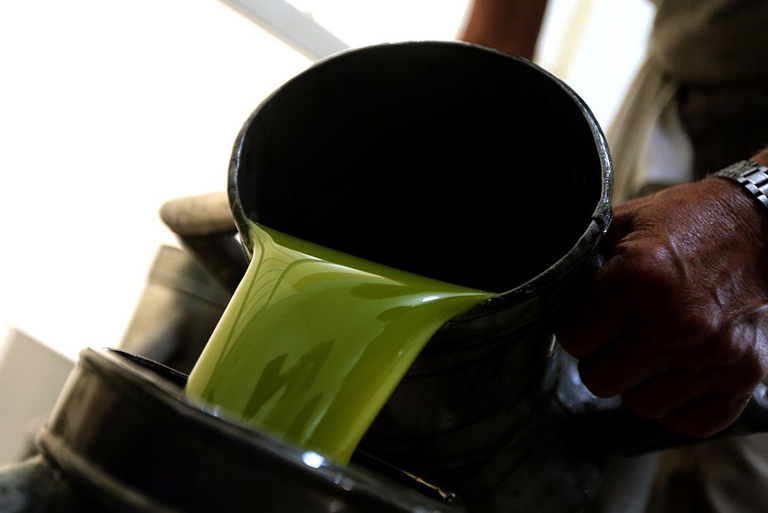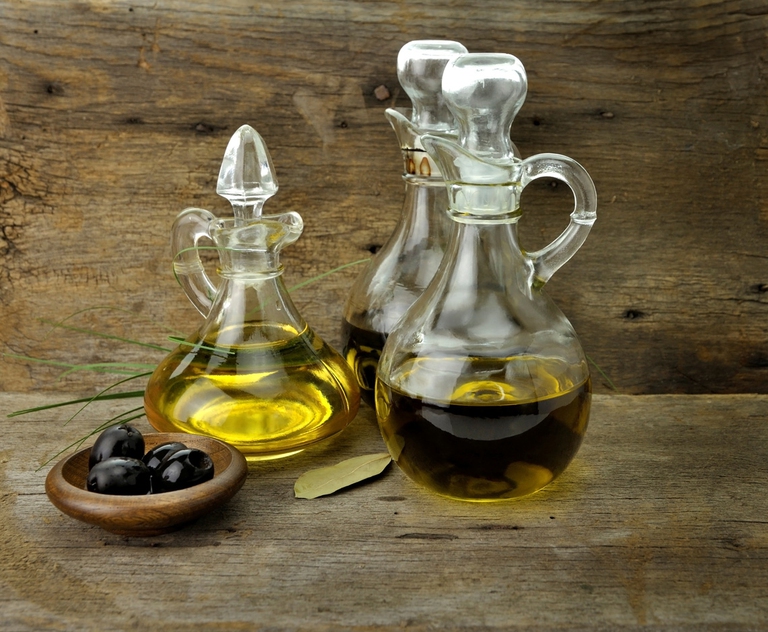
Factory farming conditions and antibiotic-resistant pathogens emerging as a result of them pose an existential threat to humans in the form of zoonotic diseases. Why it’s time to produce and consume food more thoughtfully.
We know that it’s good, it’s healthy and is the right ingredient to use in the Mediterranean cuisine (and not only). But how can we choose the best extra virgin olive oil?
Why does it make your mouth and throat tingle? Is green oil better than yellow oil? Many questions arise when we have to choose the perfect extra virgin olive oil. Here are seven useful tips to make the right choice.
Using fully ripe olives doesn’t mean producing better oil, it’s quite the opposite. Extra virgin olive oil is richer in antioxidants when it’s made from unripe olives that are harvested before the biological process is completed. Organic olive oil generally has higher levels of antioxidants than other types of oil. Harvesting olives in a set period of time isn’t good: it’s necessary to take into account that the ripening time of this fruit depends on the vagaries of each year’s weather.
Like all fats, extra virgin olive oil should be protected from oxidation and shouldn’t come into contact with polluting substances. Smells, light and heat change its properties so it’s important to carefully preserve it. Oil easily absorbs odours. For this reason it’s a perfect ingredient for producing perfumes, essences, balms and flavoured oils, but it’s also exposed to the risk of absorbing smells. It should be kept away from paint cans and fragrant detergents, in places where mildew isn’t likely to grow and smoke smell doesn’t fill the air. Light and heat stimulate oil oxidation and rancidification. If you have to put oil in a bottle, use clean and dry dark glass bottles with a screw top. Metal pourer caps should be inserted in the bottle just before use and should be then replaced with a screw top. The ideal temperature to preserve extra virgin olive oil is 15° C: if you don’t have a dry and ventilated cellar, store it in the coolest and darkest place of your home. Experts suggest to consuming oil produced in the year you buy it, because the amount of antioxidants that protect it from rancidification, decreases over time, even though olive oil begins to deteriorate 20 months after being pressed. So, the amount of antioxidants contained in extra virgin olive oil and the way it is preserved define its shelf life. Cold doesn’t change the oil structure and doesn’t condition its preservability.
Fresh oil is the best-tasting. Within one or two months after it’s pressed, its taste improves and reaches its peak. Carotene and chlorophyll are pigments that contribute to its colour. While extra virgin olive oil is stored, chlorophyll degrades and the oil becomes more and more yellow. Carotene and chlorophyll have antioxidant properties. To maintain this property it is necessary to store oil in a dark place.
The colour of oil ranges from green to yellow, with infinite intermediate shades. The greener it is the fresher and the richer in chlorophyll, a pigment that degrades with age. When it is yellow, it is richer in carotene, and is just as good as green oil. If it’s reddish-orange it means that it has become oxidized and shouldn’t be consumed.
Oil makes your mouth tingle when it has low acidity and olives have been recently pressed. Why do researchers measure acidity in olive oil? To define the percentage of oleic acid and the quality of the product. The higher the acidity, the lower the quality. Wrong production practices including the use of over-ripe olives and the passing of too much time between olive harvesting and processing increase the acidity.
There are three types of extra virgin olive oil: slightly fruity, fruity or intensely fruity. Slightly fruit oil is sweet, soft and has a delicate aroma. It can be used to fry fish, season meat or fish, prepare white sauces, delicate salads, steamed fish, sautéed vegetables for braising sea fish, sweet-and-sour vegetables. Fruity oil is tasty, fragrant and should be used to prepare fried lake fish, green fish, a cream of pulses soup, green sauces, sautéed vegetables for braising white meat, soused fish, fish soups, caprese salads, lettuce and orange salads, marinated tuna, stuffed vegetables. Intensely fruity EVO is very tasty and makes your throat tingle. It’s perfect when used to prepare: boiled, braised or stewed beef, grilled red meat, pulses and vegetable soups and bruschetta.
Extra virgin olive oil has a high rate of digestion, which is higher than that of seed oil, butter and lard. For this reason, it is one of the ingredients that should be given to babies that are being weaned.
Siamo anche su WhatsApp. Segui il canale ufficiale LifeGate per restare aggiornata, aggiornato sulle ultime notizie e sulle nostre attività.
![]()
Quest'opera è distribuita con Licenza Creative Commons Attribuzione - Non commerciale - Non opere derivate 4.0 Internazionale.
Factory farming conditions and antibiotic-resistant pathogens emerging as a result of them pose an existential threat to humans in the form of zoonotic diseases. Why it’s time to produce and consume food more thoughtfully.
The world of cinema recognises the link between food choices and the climate crisis by offering vegan menus for awards season events, including at the most important of them all: the Oscars.
Let’s look at the reasons behind the growth of veganism in India, as a small yet vocal section of the population turns towards this diet and lifestyle in the largest milk producing country in the world.
by Jeffrey Y. Campbell, Manager of the Forest and Farm Facility at FAO In the Ecuadorian Amazon, Kichwa farmers grow dozens of products on tiny parcels of land. Their lands hum with biodiversity, yielding nutritious foods that have sustained families for generations. Wandering among fruit and nut trees and crops, these indigenous agroforesters fill their baskets
Mint has many health benefits, but in food it’s often accompanied by artificial green colourings. Instead, Galatea has created a green mint ice cream in a completely natural way.
We’re talking about Galatea, a company that produces semi-finished products for artisanal ice creams using high quality ingredients, natural colouring, excluding thickeners and hydrogenated fats, respecting the environment and supporting the less fortunate.
The mad rush to fake food, like fake meat made with genetically-modified soy, ignores the importance of the diversity of our foods and culinary cultures. It’s a recipe to accelerate the destruction of the Planet and our health.
Like with all foods, the quality of an ice cream can be discerned by reading its label. An expert explains how to do this, and tells us how their company steers clear of chemicals, using only natural ingredients to produce an excellent and “free” ice cream.
Quality ingredients, no artificial colouring and hydrogenated fats. These are the main features of a great ice cream. But what makes an ice cream parlour “good”, i.e. sustainable?














